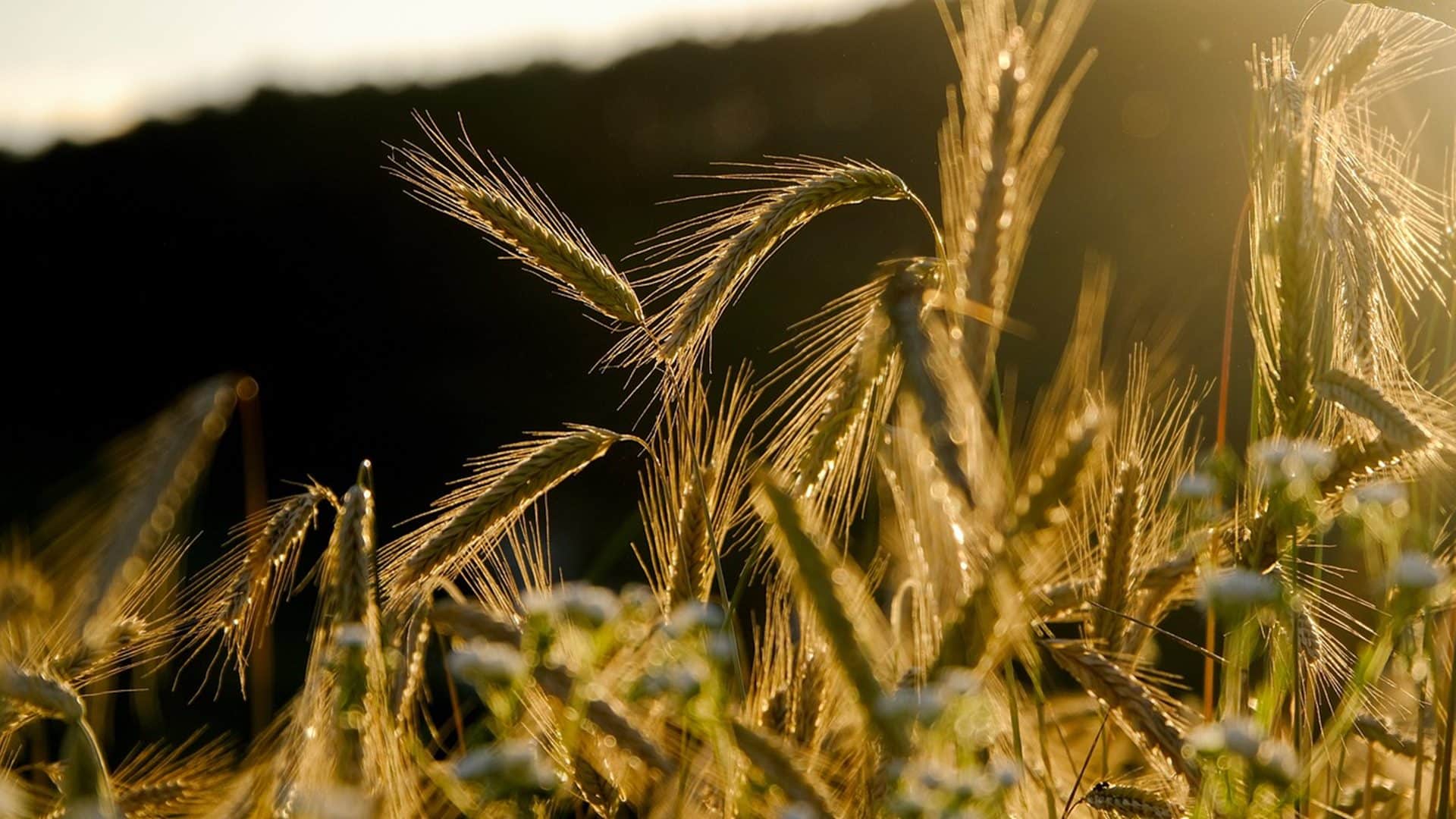Agriculture
Technology can integrate India’s fragmented agricultural ecosystem: RAAV Techlabs CEO Rahul Kumar
As per FAO estimates, nearly 40% of food produced in India gets wasted before it reaches the consumer. In monetary terms, this amounts to a loss of Rs 1 lakh crore. These losses can be attributed to fragmented food systems, supply chains gaps. Along with logistics challenges , there are issues like ensuring customer satisfaction, estimating price of the produce based on its nutritive value and shelf life.
In a bid to reduce this wastage across all stages of the agri-value chain, Delhi-based social enterprise RAAV Techlabs came up with a quality analysis mechanism to detect nutrition and adulteration in agricultural commodities like fruits, vegetables and milk. Founded by Abhinandan Bhargava, Alphonse Dhas Antony, Rahul Kumar and Varshnee Raj in 2018, the company uses AI and deep learning to assess produce quality and its impact on value chain.
In an interview with the Plunge Daily, RAAV Techlabs Co-Founder and CEO Rahul Kumar shares his vision for quality monitoring in the agriculture supply chain and the need to integrate India’s fragmented agricultural ecosystem through technology.
Q1: RAAV Techlabs was launched in 2018. Please take us through your initial journey and what made you venture into agritech space.
A: Agriculture, the backbone of the growing Indian economy, has long taken the back seat in terms of technology utilization. While most sophisticated infrastructures have focussed on matching the ever-increasing demand through an abundance of supply, the inefficiencies in the management of these agricultural raw materials along the supply chain are often neglected. Our initial research indicated that businesses dealing in agricultural commodities have problems like ensuring customer satisfaction, estimating price at the time of purchase based on nutrition and shelf life of produce, and optimizing logistics based on shipping destination and shelf life of commodities. We realized that understanding the quality of raw materials along the way can make a difference in solving these challenges.
As budding entrepreneurs, we established RAAV Techlabs with a vision to solve quality monitoring in the agriculture supply chain. We believe that a network of rapid sensing technologies backed by adaptive algorithms can support a strong tech-centric ecosystem that can handle demand and wastage smartly.
Our initial prototyping followed by pilots with reputed agriculture conglomerates enabled us to validate the market relevance of our solution and iterate it to cater to the needs of the market based on feedback. The process strengthened the accuracy and aesthetics of our solutions to match the expectations of the market.
Q2: RAAV Techlabs is known for designing quality analysis instruments for agriculture commodities. Please tell us more about your products and service and how it has benefited farmers
A: The infusion of quality analysis solutions in the supply chain can create a large-scale impact on agriculture resource management and reimbursements to farmers. At present, our products are deployed with businesses that are actively working with farmers. Our forecast for the future would be working closer to farmers to support better commodity realization.
The same mango that a farmer was selling for a fixed price (only based on external analysis), now gets scrutinized based on its internal value of sugar content, texture, and shelf life which are more important parameters when it comes to customer experience. These factors can fetch them better pricing in the market, and by providing this information we intend to open their scope for better market valuations and opportunities. We intend to create an ecosystem where better quality can command a better price.
Q3: There is also a lack of quality data in our agri-ecosystem which can be used to address modern needs. How does RAAV Techlabs overcome this challenge?
A: Personally, we feel that there is a problem of improper utilization of the existing data rather than absence of it. Also, a lot of companies are building market linkages and have successfully generated large amounts of data of quality, availability, and pricing standards. But the quality metrics are based on external appearance, and we know the old saying don’t judge a book by its cover. Sadly, a lot of excellent products that are perfectly nutritious and tasty but not appealing on the outside end up in secondary markets. A primary reason behind this is that, unlike the color or texture, evaluating the internal quality metrics of produce requires a complex and expensive process that may not be feasible on a large scale.
RAAV designs solutions that smartly fit into existing processes without the need for exhaustibles or bulky equipment. It enables the infusion of portable and petite solutions in various areas that generate more relatable data. Also, we intend to expose the true value of commodities by rapidly analyzing their internal quality metrics that should influence trade. By understanding the biological value of material beyond its external appearance, we add relevant data to these smart networks that can now make better decisions.
Q4: Tech-driven innovations have been at the heart of the startup boom in India. Scores of agritech startups have come up in the last few years which proves there is a lot of untapped potential. What, according to you, can bring India on par with its global peers.
A: Automation and subscriptions models are key in India. We have largely been an agricultural economy but still only account for approximately 2.5% of the world agricultural trade. Farming communities across the world are increasing their output by using innovative practices like vertical farming, automated seed planters and crop harvesters, geo-spatial information, newer packaging and ripening techniques. In India, there are several companies that are present for each of these above-mentioned domains. We at RAAV have consolidated this information as follows (by descending order of priority):
1.Purchasing power of farmers: the largest gap that has yet to be addressed, but at the same time, possibly the highest risk. There are institutions that provide credit lines, but its not enough. We need a model where farmers can rent out all the needs of a season (seeds, equipment, fertilizers etc.) on a contract basis from institutions, once the season is over the equipment can move on to another community or farmer where it can generate continuous revenue for the institution and is not a huge expense for the farmer to rent. This kind of model works out better since new and improved techniques can be phased in at any time by these well-funded, more informed and in many cases, government backed institutions.
2.Market linkage & e-commerce platforms companies: The problem here is that farmers have limited access to traders (who have the ability to dictate prices over huge volumes of yield). These market linkage businesses have less or no technological infrastructure to assess produce quality which in turn has a significant impact on the value of the produce. Nutritional content, external defects, adulteration and shelf life are parameters which need a lot of attention especially over huge volumes. E-commerce platforms share similar pain points which can be resolved using our solutions.
3. Food Processing Companies and Exporters: This segment in the supply chain gives most importance to quality assurance. Nevertheless, the current infrastructure laid out is restricted to the confines of a laboratory. The advent of portable, non-destructive and rapid quality analysis tools developed by us will streamline all procurement processes and will ensure good quality of produce flowing through their ecosystem. High rejection rates is a critical problem by the majority of exporters. Using our solutions can ensure the stakeholders that every produce which is sent is tested to reduce the probability of rejections.
We believe that the solutions we develop are connecting the fragmented agricultural ecosystem in the grand scheme of things. We live in one of the richest agricultural economies of the world. Enabling the entire supply chain with technology can help our nation reach unthinkable territories.

The founding team of RAAV TechLabs
Q5: A 2020 study by Ernst & Young placed the Indian agritech market potential at $24 billion by 2025. Last year, the agritech space received around USD 2 billion in funding. How do you see India’s agritech landscape evolving in coming years?
A: The growing interest among investors reflects their excitement to explore the potential of the agritech space which forecasts promising demands in the years to come. Startups that have raised large quantums of money today are in fact working towards building exceptional agritech solutions.
But, sadly funding support alone cannot build a revolutionary agritech landscape. Our interactions with multiple fellow entrepreneurs and stakeholders suggest the absence of breakthrough business models which are scalable along with a lack of adaptation. A lot of companies are raising capital to operate at losses in exchange for a bigger market share. Although it is known to work for consumer mindsets since there is a certain brand mentality in that space, for enterprises, it really doesn’t work the same way.
We foresee judicious infusion of funding to match the growing rate of agritech startups. But along with these funds growth in supporting infrastructure in this space will also evolve. Growing technologies such as deep-tech, AI and blockchain will contribute in taking the agritech market to achieve the forecasted potential. Furthermore, strengthening relations between corporate fintech companies, agritech solution providers and farmers will create an important avenue for expanding opportunities in the segment that may even slowly start to benefit the producers. Integration of complementary technologies could also enable better adaptation of technology solutions throughout the supply chain.
Also Read: New age-tech changing the face of Indian agriculture: NCML Agcon CEO Nalin Rawal
Q6: Pandemic has accelerated the implementation of technology in the agricultural industry. What, in your opinion, are the important technological trends that will have a significant impact in 2022 and beyond?
A: In the agri-tech ecosystem, we see that multiple companies are innovating on different fronts of the supply chain like:
1.Pre-harvest monitoring: using geo-spatial information from satellites or drones, genetically modified seeds that are resistant to pests and different kinds of fungus, eco-friendly fertilizers and composting techniques, cold storage solutions
2.Post-harvest monitoring: using handheld sensors or conveyor solutions to analyze grade, size, color, nutrition, adulteration, shelf life, taste and many other parameters relevant to customer experience, pricing, storage and/or food safety
3.Credit lines: providing credit line to farmers and businesses to increase their yield, buy input materials like seeds, equipment, fertilizers
4. Market linkages: Giving buyers access to multiple farmers and traders to evaluate the best price to value ratios who in turn will have multiple options to sell their produce as well.
5. Logistics and Storage: Innovative cold storage solutions and warehouse monitoring solutions. Optimizing logistics on the basis of shelf-life.
Q7: Please tell us about your team, your presence in the country and your roadmap for future growth.
A: We have a team of 8 people currently, including four founders experienced in product development, supply chain analysis and biotechnology. We have multiple deployments for analyzing commodities like wheat, grapes and apples where the majority of our focus is. We are also expanding into analysis of mangoes, mustard and pomegranates. Our current presence includes Madhya Pradesh, Bihar, Andhra Pradesh, Maharashtra, Uttar Pradesh.
Our mission at RAAV is to be synonymous with quality and innovation especially in the agricultural ecosystem. We actively pursue like-minded entrepreneurs to partner with us, to collectively add value to the existing system through full stack solutions like warehouse monitoring, automation, traceability solutions and more.
Q8: Please share with us your business revenue model. Has RAAV Techlabs turned profitable?
A: We essentially target different stakeholders of the supply chain and get them acquainted with our solutions. We operate with two models Subscription: and one time sales. Stakeholders can subscribe to our solutions on a monthly/seasonal time; or purchase our devices (outright sale model) which includes an AMC.
We are not yet profitable, but at the same time, we’ve sustained ourselves purely on revenue from customers through several deployments in various geographies and secured grants from various institutions that have immensely accelerated our R&D.
Q9: Please tell us about your funding and what makes investors bullish about RAAV Techlabs.
A: We are actively seeking investments to support scalable deployments for the coming years. We have raised capital via multiple government/private grants and partnerships. These institutions understand and believe the relevance of our solutions in rectifying fundamental problems faced in the agricultural ecosystem. Companies in the similar space have also set a good pretense about the promise and potential for growth.











































Pingback: PrepInsta launches new OTT learning platform- PrepInsta Prime